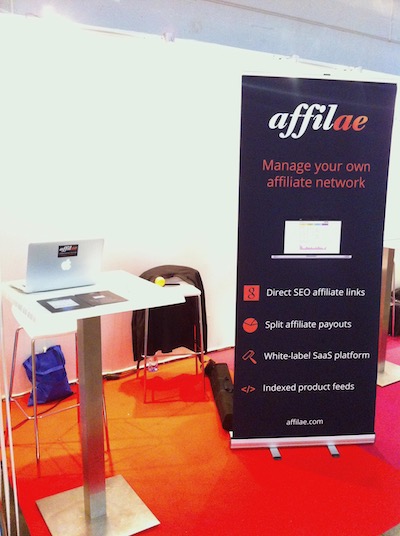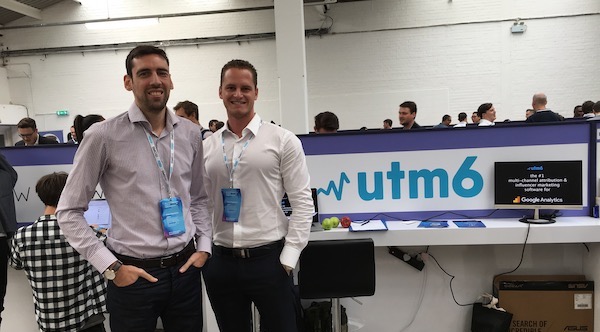The story
Welcome, I'm Pierre Bazoge, the creator of Rimdian, and I'd like to share how it all began.
In 2011, I launched my first SaaS platform, Affilae.com, with the aim of setting new standards in the affiliate marketing industry. The primary challenge was combating fraud and ensuring fair compensation for genuine affiliates.
While calculating affiliate commissions proved relatively straightforward, the real difficulty lay in accurately identifying the contributors to conversions. This required developing methods to track the entire user conversion journey and implementing 'multi-touch attribution' algorithms. Initially unforeseen, this aspect quickly became a focal point of my expertise, leading me to delve deep into the realms of cookies and web tracking.
In 2015, I sold Affilae and subsequently launched another SaaS venture in 2016 named UTM6. This platform aimed to simplify the creation of affiliate marketing programs for websites through seamless integration with Google Analytics.
The development of UTM6 involved reverse engineering Google Analytics, leading me to uncover several design flaws:
- Lack of user-identity reconciliation.
- Absence of cross-device and cross-domain reconciliation.
- Tracking domain being blocked by AdBlockers.
- Limitations imposed by the 90-day "attribution window."
- Inability to attach personally identifiable information (such as emails) to the data and consequently hindered the ability to build marketing automation on top of it.



How could it be that the entire eCommerce industry was shaping its digital marketing strategies based on inaccurate data provided by Google Analytics?
Here we are in 2024, seven years later, and nothing has changed. Despite the arrival of Google Analytics 4, the same design flaws persist, and many marketers remain oblivious to them.
In 2017, recognizing that innovating atop Google Analytics was an unattainable goal,Tom Guillemin and I made the decision to embark on creating our own web analytics solution from the ground up: Captain Metrics.
The first Customer Data Platform
Captain Metrics made its debut in 2019, joining the inaugural wave of Customer Data Platforms. It placed a strong emphasis on tracking capabilities to accurately gauge digital marketing performance within a multi-touch framework, spanning cross-device (from mobile to laptop) and cross-domain (from web to store) contexts.

A year later, the renowned tag manager Segment.com was acquired by Twilio for $3.2 billion and rebranded as a Customer Data Platform, despite lacking key CDP features such as cross-device user-identity reconciliation, multi-touch marketing attribution, marketing automation, real-time processing, and user segmentation.
By 2021, every CRM, DMP, and email marketing tool began rebranding themselves as CDPs to attract investors. Meanwhile, I was already encountering the limitations of such platforms firsthand.
Customer Data Platforms proved inflexible; they relied on strict database schemas to accommodate complex real-time algorithms (like user-identity reconciliation, multi-touch attribution, and user segmentation), unable to adapt to custom requirements.
The same year marked the rise of 'Modern Data Stack' tools, promising users the ability to 'build your own CDP on top of your Data Warehouse.' However, this notion proved misleading for several reasons:
- Data Warehouses (such as BigQuery and Snowflake) lack transactional and real-time database capabilities.
- The true value of a CDP lies in its tracking technology and algorithms (e.g., user-identity reconciliation, user segmentation, marketing automation, multi-touch attribution), absent from the Modern Data Stack ecosystem.
- Building and maintaining a CDP atop a data warehouse requires a team of at least three highly skilled, well-compensated data engineers.
Recognizing these challenges, in 2022, I resolved to develop a superior solution — a CDP possessing the flexibility of the Modern Data Stack. Captain Metrics, despite its strengths, proved too rigid to remain competitive over the next decade.
The genesis of Rimdian
What was the solution?
→ The creation of an Operating System tailored for managing digital marketing data.
Similar to a smartphone, this OS furnishes a real-time framework while applications offer customizable features.
Rimdian emerged from this concept and has been released to the public in 2024.
What Rimdian does provide:
- Tracking technology for gathering customer activity across various domains (web, app, in-store, offline…).
- User-identity reconciliation (cross-device & cross-domain).
- Multi-touch attribution for marketing campaigns.
- User-segmentation engine.
- Marketing automation engine.
- Real-time processing and data updates.
- An application store hosting apps capable of integrating into the data lifecycle, having their own tables, adding columns to existing tables (users, orders…), and featuring their own UI within the Rimdian console.
- Open-source code deployable in your cloud infrastructure.
- Some pre-built apps (Google Ads, Facebook Ads, Shopify…).
What Rimdian does not offer:
- We will not develop all the apps but invite third-party developers to build on our ecosystem.
- Subscription to SingleStoreDB, the supported database.
- Legal counsel regarding personal data processing compliance with prevailing laws in your jurisdiction.
The values & the vision
My journey in the digital marketing industry has been driven by an unwavering quest for truth. Everything I create should endure for decades, or I cease its operation.
Thirteen years since its inception, Affilae.com still embodies this vision and has emerged as a leader in the French affiliate marketing sector, owing to the dedicated efforts of Alexandre Dos Santos & his team.
I perceive my work as an art, propelled by a passion for innovation where monetary gain takes a back seat.
While everyone talks about AI, AI bereft of quality data is not just useless, but perilous.
My vision for Rimdian is to serve as the foundational data powerhouse for online businesses, empowering them to seamlessly integrate AI applications and elevate their operations.
In today's digital marketing landscape, who prioritizes data quality? Hardly anyone.
Understanding this should suffice to recognize Rimdian as one of the most vital pieces of technology you can deploy for your business.
Given Rimdian's pivotal role in your tech stack, you should have the ability to deploy it locally and verify that its source code is devoid of any backdoors.
If your data is gold, Rimdian is the drill, the foundry & the jeweler.
FAQ
Why is it called Rimdian? → Simply because the .com domain was available. 😀
Did you build Rimdian alone? → Yes, so far.
How is it possible to build such a big platform alone? → Surprisingly, sometimes it's as feasible as failing to achieve the same with a team of 50 engineers.
Why can't your competitors with 50 engineers achieve what you did? → Because they're constrained by deadlines... It took me a decade of trial and error to accumulate the necessary expertise.
Why didn't Google Analytics 4 fix its issues? → It's a trade-off. Operating a real-time engine like Rimdian is costlier, and Google Analytics prioritizes remaining free. For Google, capturing 80% of global web traffic to discern trends holds more value than computing precise numbers for a few businesses.
Why don't you have a co-founder? → While I remain open to the possibility, it's not a prerequisite for me.